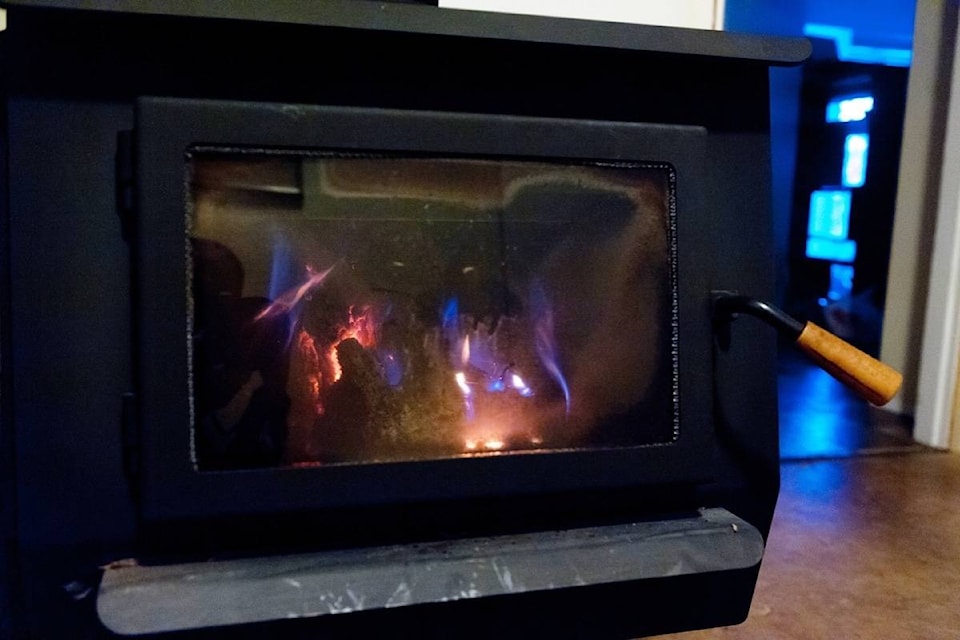Exposure to smoke can be harmful to health, and Island Health is encouraging municipal goverments to consider helping reduce the amount of woodsmoke in their communities.
The 2017 Health Canada study, using air quality data from communities that included Courtenay and Comox, show that an increase in fine particulate matter (PM2.5) — a major component of air pollution and a detriment to health — specifically due to wood burning in the winter, was associated with a 19 per cent increase in hospitalization for heart attacks among those 65 years and older.
Island Health’s medical officer Paul Hasselback informed the Regional District of Nanaimo about this serious health issue in a letter to the board. He has been receiving regular concerns raised by residents about the exposure to outdoor smoke produced by wood-burning appliances and backyard burning.
Wood burning appliances, said Hasselback, are used by some residents as the main source of heat in their homes, while others use them as secondary heating sources. But the smoke emitted by wood burning, he pointed out, contains PM2.5, which can easily be inhaled deep into the lung tissue.
It is blamed for contributing to a host of health issues, such as lung cancer, heart disease, asthma and other respiratory diseases. It can also shorten one’s lifespan.
PM2.5 stands for invisible bits of pollutants that are 2.5 micrometres or smaller, or about three per cent the diameter of a human hair.
The provincial government in 2016 adopted the new Solid Fuel Burning Domestic Appliance Regulation (SFBDAR), which now requires domestic wood-burning appliances sold in B.C. to be United States Environmental Protection Agency certified to meet emission standards of less than 4.5 grams/hour. That will be restricted further to 2.5 grams/hour by 2020. There are also provisions on the type of fuel that can be burned.
As well, the use of non-certified hydronic wood boilers installed prior to May 1, 2017 is to be discontinued by 2026.
SFBDAR does not impose similar requirements for existing, non-certified wood stoves, and Hasselback is urging local governments to introduce wood-burning bylaws that address sections not covered in the SFBDAR.
He highlighted some of the ways to do this, including updating or implementing air quality bylaws that would allow stringent controls on the type and use of wood burning appliances such as eliminating and replacement of existing, non-certified appliances.
Offering incentive programs, Hasselback said, is another way to coax owners to replace outdated wood-burning appliances. It supports wood alternative heating methods such as heat pumps. As well, the provincial woodstove exchange program can be utilized as it offers higher incentives for cleaner heating options and has made heat pumps eligible.
Raising public awareness through social marketing and educational campaigns about the health effects of the use of wood stoves is also a key in encourging local residents to look at alternative heating sources.
Municipalities and local governments can implement bylaws that restrict backyard burning, including limitations on materials, setbacks and time periods. Existing laws, said Hasselback, can be strengthened to include burning restrictions year-round in urban containment areas.
Hasselback encourages elected officials to look at ways of curbing an increase of smoke in the region by adopting one or more of these strategies.
The RDN board has decided to invite Hasselback to discuss this issue further so they can have a better understanding as to what direction they can take to address this issue.
